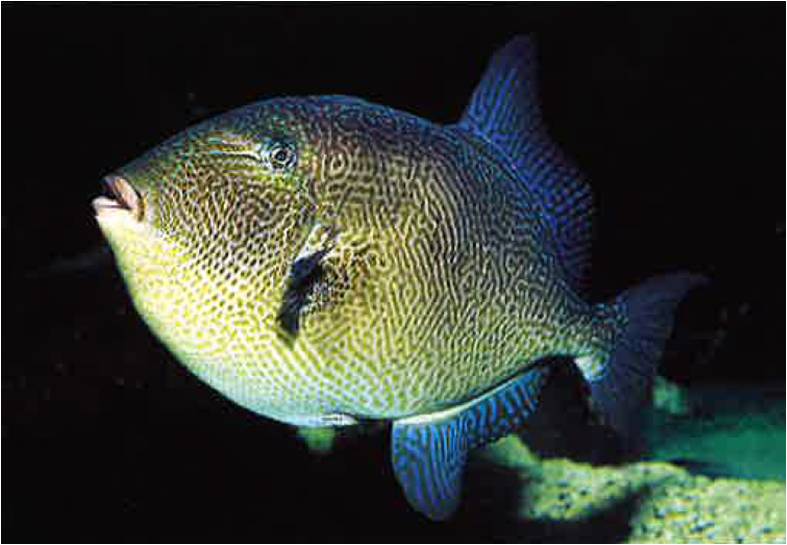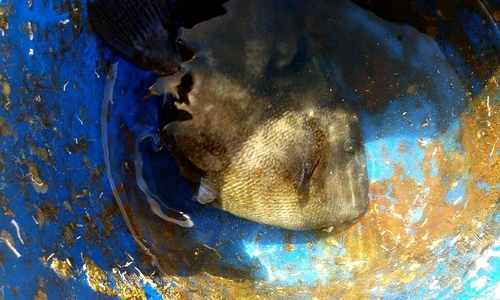
Grey triggerfish
Marine Protected Areas
The grey triggerfish (Balistes capriscus)
On July 27, a strange discovery was made by members of the AMPN in the Larvotto reserve: a fish had taken refuge in the bottom of an abandoned bucket that was floating on the surface. Once photographed, this fish was returned to the water and left as if nothing had happened. A simple anecdote? Yes, except that it is a fish quite rarely seen along our coasts, a grey triggerfish.
It is the only Mediterranean representative of the Balistidae family, a rather tropical family of fish. It can exceed 40 cm in length and lives in the littoral zone between the surface and about fifty meters deep. As with all triggerfish, the body is easily recognizable with a fairly rounded shape (back and belly), the very robust first dorsal fin, often in the folded position, and the fairly high second dorsal and anal fins, opposite to each other, and which undulate while swimming. The mouth is quite small, adorned with very powerful teeth, capable of crushing the shells of molluscs of which the triggerfish is fond. Present mainly in the southern Mediterranean and in the tropical Atlantic, it is more and more often observed in the north. In the Atlantic, this northward movement began in the 1990s and the triggerfish has now reached Scotland. In the Mediterranean, sightings have always been quite rare along our coasts or in Corsica, but it seems that the triggerfish has been less and less rare in recent years. It has already been observed in Scandola and Lavezzi (Corsica) and in Port-Cros. On the other hand, it never seems to have been observed in Monaco.
North of its repair limit, so along our coasts for example, the triggerfish is present but does not reproduce yet. You will therefore have to dive into the southern Mediterranean to observe the curious behavior during reproduction. The parents dig a basin in the sand and one of the parents keeps the eggs laid and fertilized there: a fairly basic nest, but very similar to that built by the male Black seabream, a common species in our country.
If during your excursions at sea you observe an unusual species, even unknown to you, send us the observation, it can be valuable.

